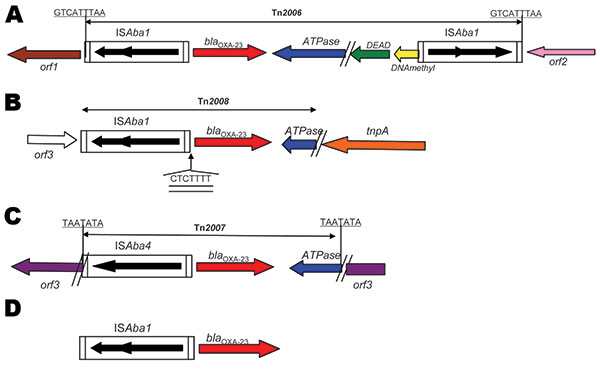Volume 16, Number 1—January 2010
Research
Worldwide Dissemination of the blaOXA-23 Carbapenemase Gene of Acinetobacter baumannii1
Figure 1

Figure 1. Genetic structures associated with the blaOXA-23 gene of Acinetobacter baumannii. A) Tn2006 from isolates 240, 512, 810, 859, 883 and AUS (ST22/ST2). B) Tn2008 from isolate 614. C) Tn2007 from isolates Ab14, BEL, and DOS. D) ISAba1 from isolates AS3, 1190, 861, and 877. Boundaries of Tn2006, Tn2007, and Tn2008 are indicated with the target site duplication likely generated by transposition events underlined. The 7-bp difference in the site of insertion of ISAba1 for isolate 614 is double-underlined. The open reading frame 1 (orf1), orf2, and orf3 genes of unknown function is indicated. tnpA, gene encoding a putative transposase; ATPase, gene encoding the putative AAA ATPase; DEAD, gene encoding the putative DEAD (Asp-Glu-Ala-Asp) helicase; DNAmethyl, DNA methylase.